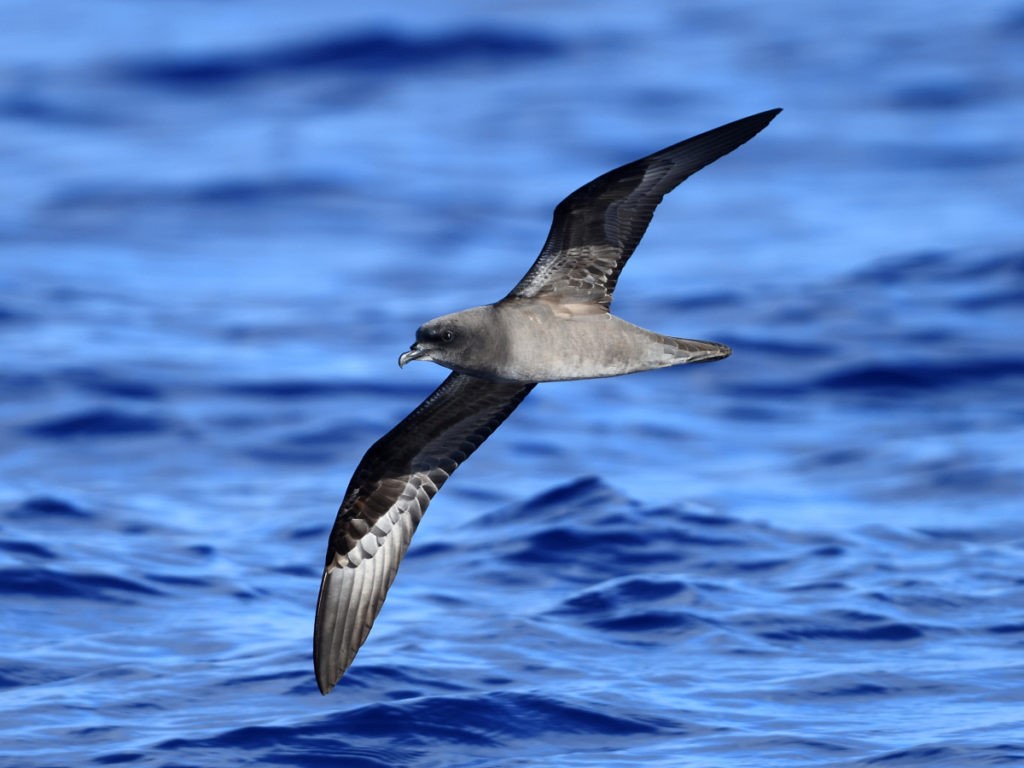Birdfinding.info ⇒ Globally rare and endangered, but locally common around Henderson Island and elsewhere in the Pitcairn Archipelago. Small numbers can also be found at Easter Island (Chile), and in some island groups of French Polynesia—though the full extent of its range is poorly understood, in part due to confusion over its status as a separate species or as the dark morph of Herald Petrel.
Henderson Petrel
Pterodroma atrata
Breeds in eastern Polynesia, and disperses across the tropical central and eastern Pacific Ocean.
Known to breed on Henderson Island, in the Pitcairn Archipelago (and formerly on Ducie and Pitcairn Islands), and Easter Island, and suspected in the Gambier and Marquesas Archipelagos. In 2015, the global population was estimated at about 20,000 pairs.
When not breeding, it disperses across Polynesia and to some extent into the tropical North Pacific—at least occasionally to Hawaiian and Central American waters.
Identification
A medium-large gadfly petrel with proportionately long, thin wings and body, that is almost entirely blackish-gray overall.
Often appears uniformly sooty throughout, but feather-wear, newly molted feathers, and the angle of lighting can result in the appearance of contrasts and differing colors.
The upperparts are mostly blackish, but in some situations can show some contrast between grayer and browner feathers.
On the underparts, the body is basically uniform, although it sometimes appears to have a darker hood, pale chin, and subtle whitish scaling on the belly.
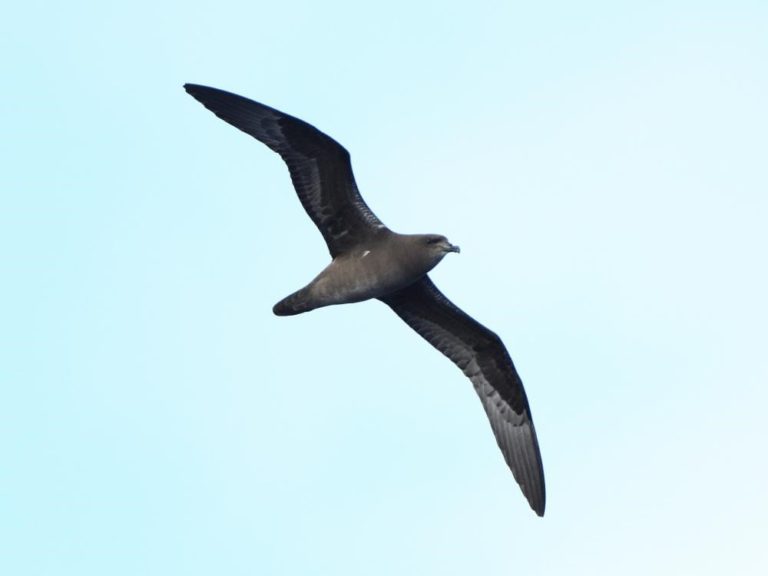
Henderson Petrel, showing black wing linings and silvery primaries and secondaries. (Offshore from Henderson Island, Pitcairn Islands; November 10, 2018.) © Hiroyuki & Shoko Tanoi
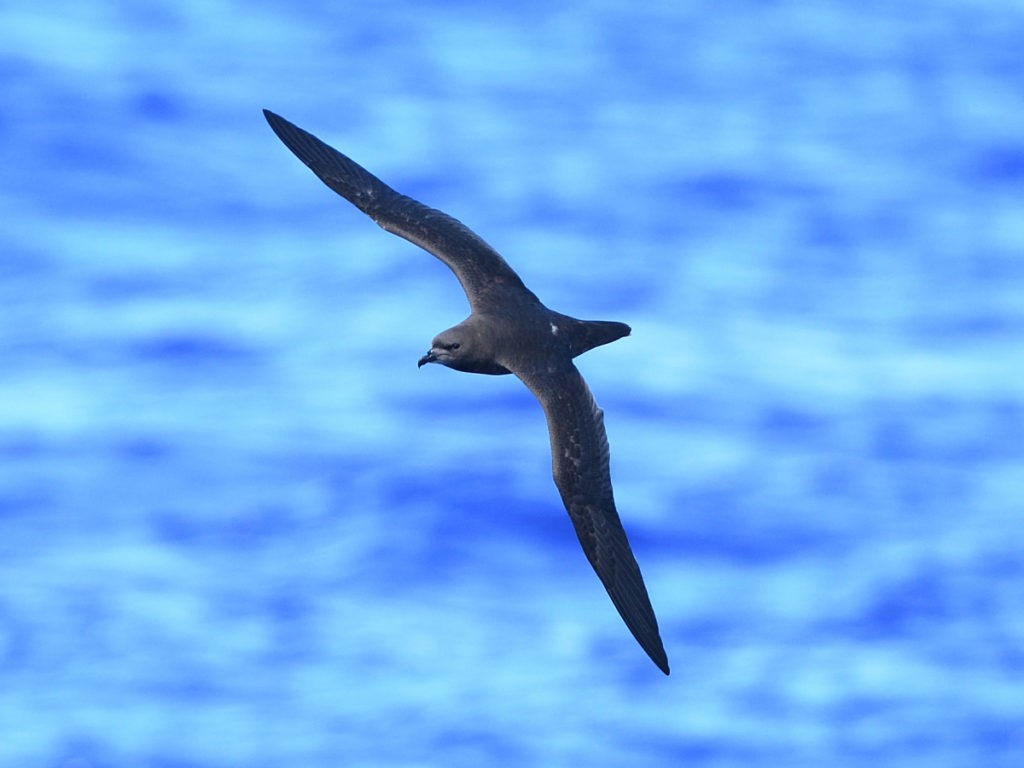
Henderson Petrel, showing apparently all-black upperparts. (Offshore from the Pitcairn Islands; November 9, 2018.) © Hiroyuki & Shoko Tanoi

Henderson Petrel, with glaring sunlight making its upperparts appear silvery with a brownish “M.” (Offshore from the Pitcairn Islands; November 9, 2018.) © Hiroyuki & Shoko Tanoi
The underwings tend to show contrast between blacker wing linings and silvery flight feathers and usually a pale-gray or whitish patagial stripe along the leading edge of the inner wing.
Newly molted flight feathers and underwing coverts can appear white, so in some cases, depending on the lighting, underwings may appear extensively mottled black-and-white.

Henderson Petrel, showing black wing linings and silvery primaries and secondaries. (Offshore from Henderson Island, Pitcairn Islands; November 10, 2018.) © Hiroyuki & Shoko Tanoi
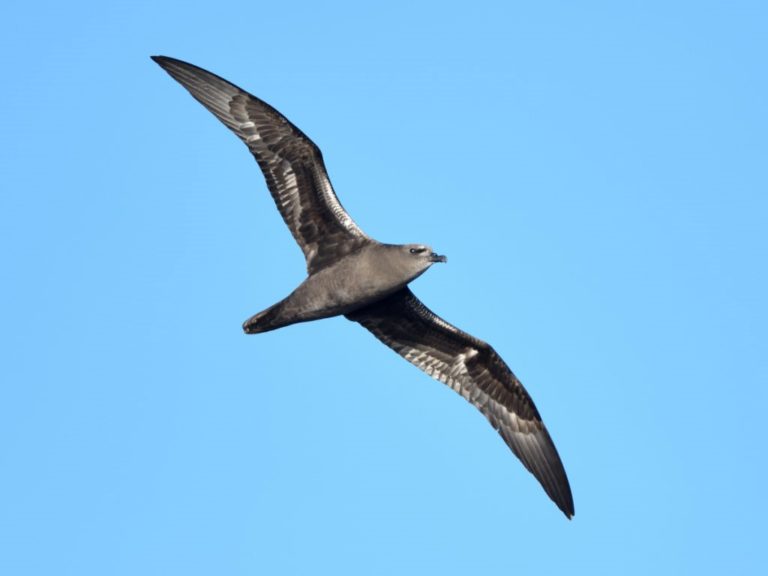
Henderson Petrel, showing black wing linings, whitish patagial stripes, and silvery primaries and secondaries. (Offshore from Henderson Island, Pitcairn Islands; November 10, 2018.) © Hiroyuki & Shoko Tanoi

Henderson Petrel, showing mostly black wing linings, whitish patagial stripes, and silvery primaries and secondaries. (Offshore from Henderson Island, Pitcairn Islands; November 10, 2018.) © Hiroyuki & Shoko Tanoi

Henderson Petrel, showing black wing linings and silvery flight feathers. (Motu Nui / Motu Iti, Easter Island, Chile; January 13, 2019.) © Fernando Díaz (Albatross Birding Chile)

Henderson Petrel, showing mostly black wing linings, whitish patagial stripes, and silvery primaries and secondaries. (Henderson Island, Pitcairn Islands; September 7, 2013.) © North Thailand Birding

Henderson Petrel, showing extensively mottled underwings: mostly blackish wing linings, with some freshly molted feathers, whitish patagial stripes and primaries, and blackish secondaries. (Offshore from Henderson Island, Pitcairn Islands; November 10, 2018.) © Hiroyuki & Shoko Tanoi
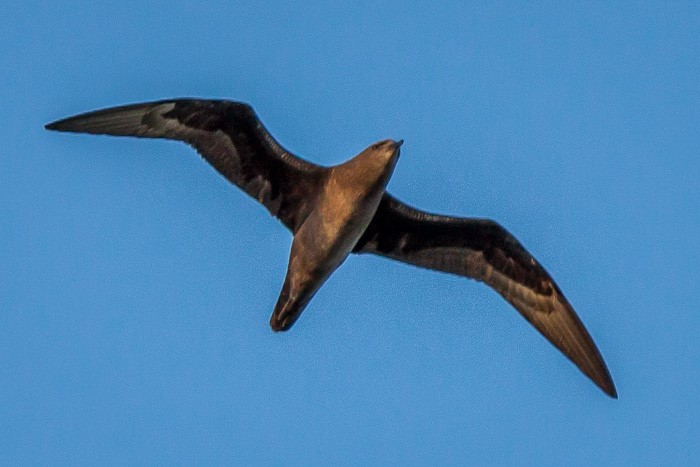
Henderson Petrel, showing mostly black wing linings, whitish patagial stripes, and silvery primaries and secondaries. (Henderson Island, Pitcairn Islands; September 7, 2013.) © North Thailand Birding

Henderson Petrel, appearing mostly blackish with grayer flight feathers. (Motu Nui / Motu Iti, Easter Island, Chile; October 12, 2018.) © Alvaro Jaramillo
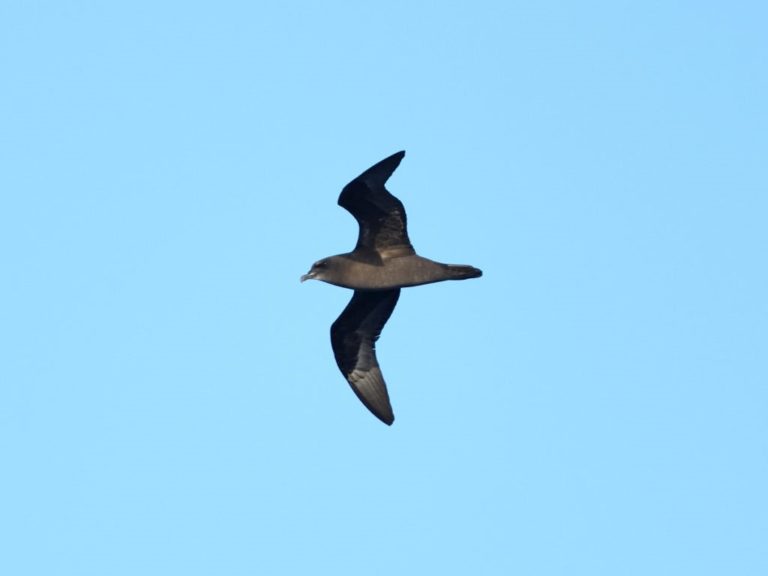
Henderson Petrel, showing darker hood and paler chin. (Offshore from Henderson Island, Pitcairn Islands; November 10, 2018.) © Hiroyuki & Shoko Tanoi
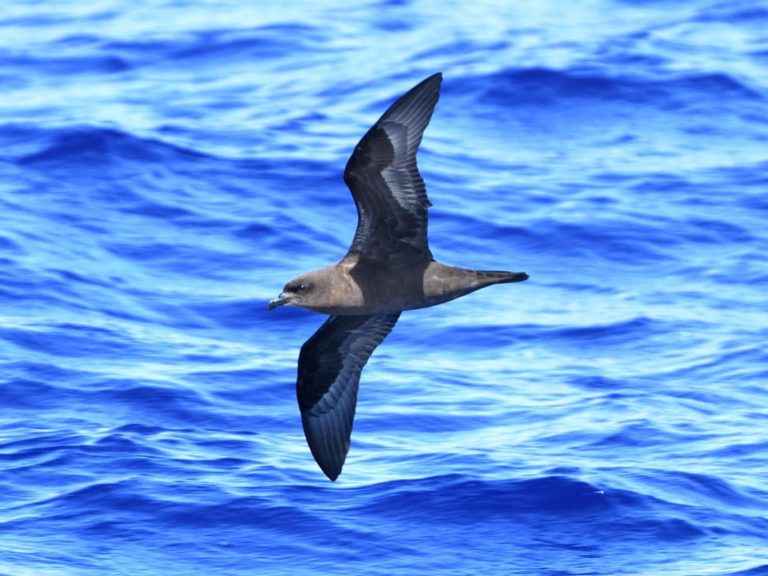
Henderson Petrel, showing black wing linings and silvery primaries and secondaries. (Offshore from the Pitcairn Islands; November 9, 2018.) © Hiroyuki & Shoko Tanoi

Henderson Petrel, showing black wing linings and silvery primaries and secondaries. (Offshore from the Pitcairn Islands; November 9, 2018.) © Hiroyuki & Shoko Tanoi
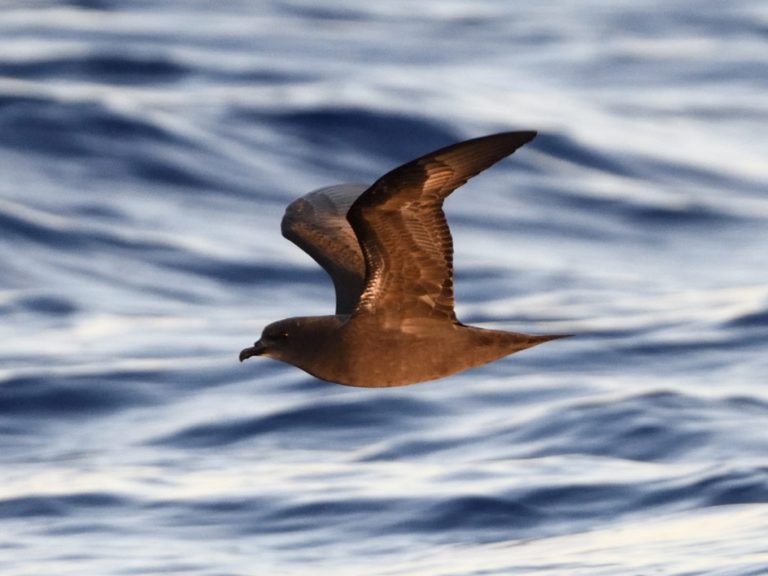
Henderson Petrel, appearing dark-brown in this lighting—and showing whitish patagial stripe and patch in the primaries. (Offshore from the Pitcairn Islands; November 9, 2018.) © Hiroyuki & Shoko Tanoi
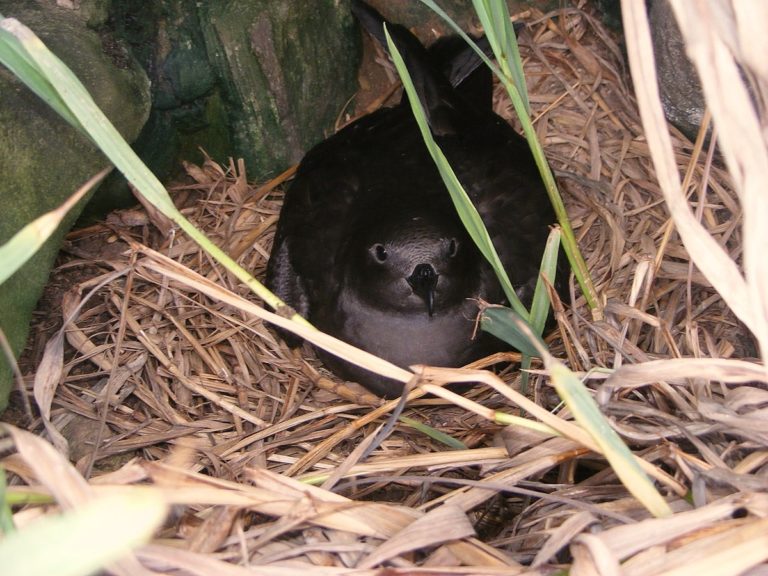
Henderson Petrel on nest. (Easter Island, Chile; June 23, 2015.) © Paula Plaza

Henderson Petrel. (Henderson Island, Pitcairn Islands; September 7, 2013.) © North Thailand Birding

Henderson Petrel—identified by the photographer as a dark morph Herald Petrel, which is currently regarded as synonymous with Henderson Petrel. (Morane Atoll, Gambier Islands, French Polynesia; March 9, 2003.) © Eric VanderWerf
Cf. Murphy’s Petrel. Henderson and Murphy’s Petrels overlap widely in the central and eastern Pacific Ocean. They differ somewhat in structure and in the coloration of the face and underwings.
Structure: Although their measurements are similar, Murphy’s is more robust and averages much heavier. Their flight patterns consequently differ, with Murphy’s tending more toward high arcs.
Facial Coloration: Both Henderson and Murphy’s often have pale chins, but Murphy’s tends to be paler and more extensive.
Underwings: Both Henderson and Murphy’s have mostly dark underwings, with flight feathers that appear somewhat paler—an effect that varies with lighting. However, Murphy’s also has whitish patches on the undersides of the primaries that are always present.
Cf. Great-winged Petrel. Great-winged and Henderson Petrels do not normally occur together, and overlap only exceptionally in cases of long-distance vagrancy. In such cases, they would be easily confused, and their plumages are effectively identical. They differ significantly in size, however, as Great-winged is one of the largest Pterodromas, measuring about 20% longer-bodied, 15% longer-winged, much heavier-bodied, and somewhat larger-billed than Henderson.
Cf. Christmas and Sooty Shearwaters. Henderson Petrel and Christmas and Sooty Shearwaters overlap widely in the tropical central and eastern Pacific, where they may be more likely to be mistaken for one another than for another petrel or shearwater. Their plumages are approximately the same in most respects, and Henderson is more shearwater-like than most petrels, with proportionately long, thin wings and body. The shape of the bill and facial profile differ objectively—as the shearwaters have longer, thinner bills, whereas Henderson has the shorter, thicker bill of a Pterodroma.
Notes
Monotypic species. Formerly regarded as conspecific with Herald Petrel (P. heraldica) and Trindade Petrel (P. arminjoniana), known collectively as the Herald Petrel (P. arminjoniana).
IUCN Red List Status: Endangered.
References
BirdLife International. 2018. Pterodroma atrata. The IUCN Red List of Threatened Species 2018: e.T22728442A132659355. https://dx.doi.org/10.2305/IUCN.UK.2018-2.RLTS.T22728442A132659355.en. (Accessed September 22, 2020.)
Brooke, M. 2004. Albatrosses and Petrels across the World. Oxford University Press.
eBird. 2020. eBird: An online database of bird distribution and abundance. Cornell Lab of Ornithology, Ithaca, N.Y. http://www.ebird.org. (Accessed September 22, 2020.)
Harrison, P. 1983. Seabirds: An Identification Guide. Houghton Mifflin, Boston.
Howell, S.N.G. 2012. Petrels, Albatrosses & Storm-Petrels of North America. Princeton University Press.
Howell, S.N.G., and K. Zufelt. 2019. Oceanic Birds of the World. Princeton University Press.
Onley, D., and P. Scofield. 2007. Albatrosses, Petrels & Shearwaters of the World. Princeton University Press.
Pratt, H.D., P.L. Bruner, and D.G. Berrett. 1987. A Field Guide to the Birds of Hawaii and the Tropical Pacific. Princeton University Press.
Pyle, R.L., and P. Pyle. 2017. The Birds of the Hawaiian Islands: Occurrence, History, Distribution, and Status. Version 2 (January 1, 2017). http://hbs.bishopmuseum.org/birds/rlp-monograph/. B.P. Bishop Museum, Honolulu, Hawaii.
